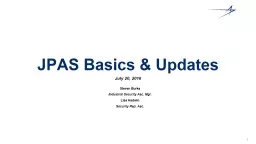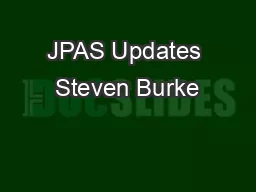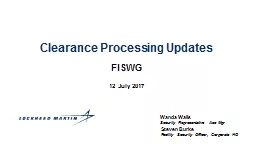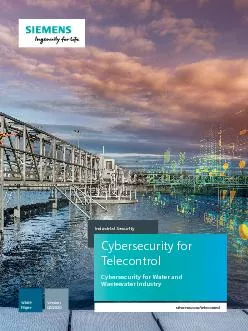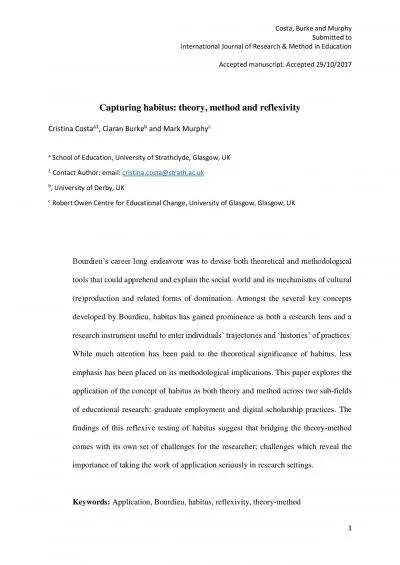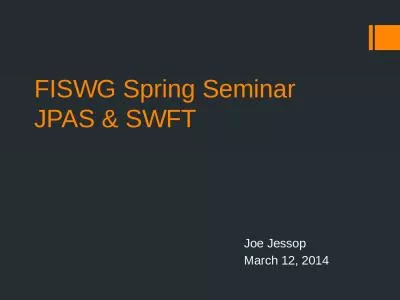PPT-JPAS Basics & Updates July 20, 2016 Steven Burke Industrial Security
Author : sherrill-nordquist | Published Date : 2019-11-04
JPAS Basics amp Updates July 20 2016 Steven Burke Industrial Security Asc Mgr Lisa Hadwin Security Rep Asc What Youre Here For JPAS Basics SWFT Basics Clearance
Presentation Embed Code
Download Presentation
Download Presentation The PPT/PDF document "JPAS Basics & Updates July 20, 2016 ..." is the property of its rightful owner. Permission is granted to download and print the materials on this website for personal, non-commercial use only, and to display it on your personal computer provided you do not modify the materials and that you retain all copyright notices contained in the materials. By downloading content from our website, you accept the terms of this agreement.
JPAS Basics & Updates July 20, 2016 Steven Burke Industrial Security: Transcript
Download Rules Of Document
"JPAS Basics & Updates July 20, 2016 Steven Burke Industrial Security"The content belongs to its owner. You may download and print it for personal use, without modification, and keep all copyright notices. By downloading, you agree to these terms.
Related Documents

